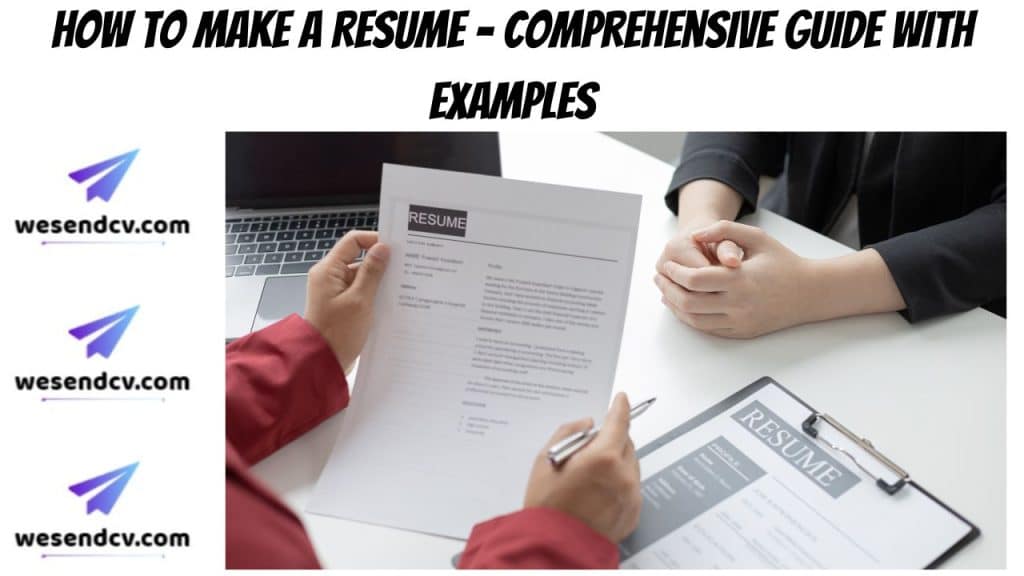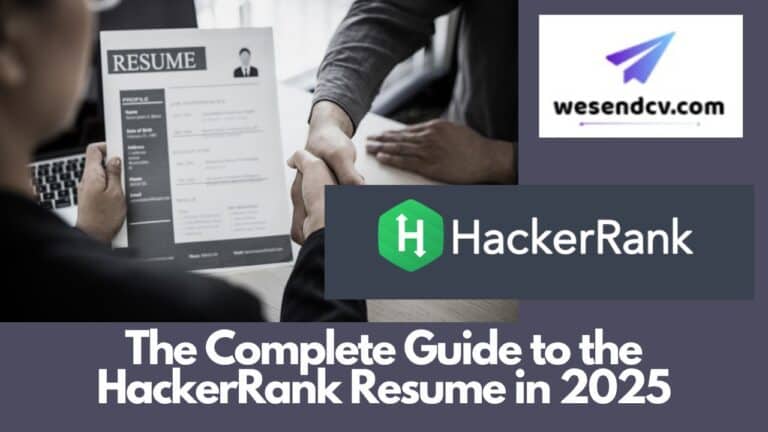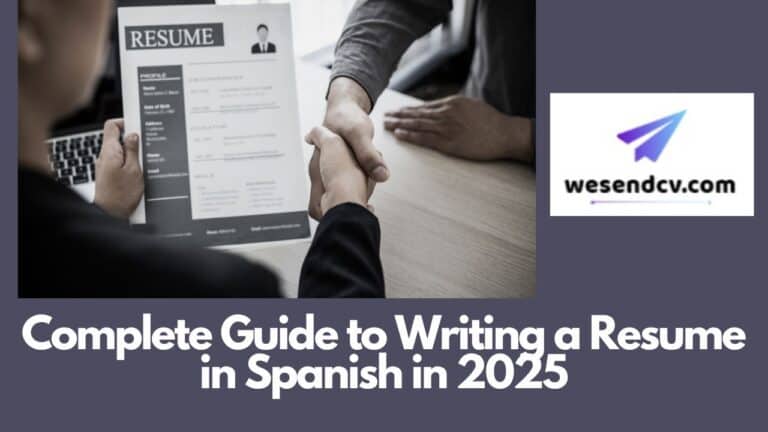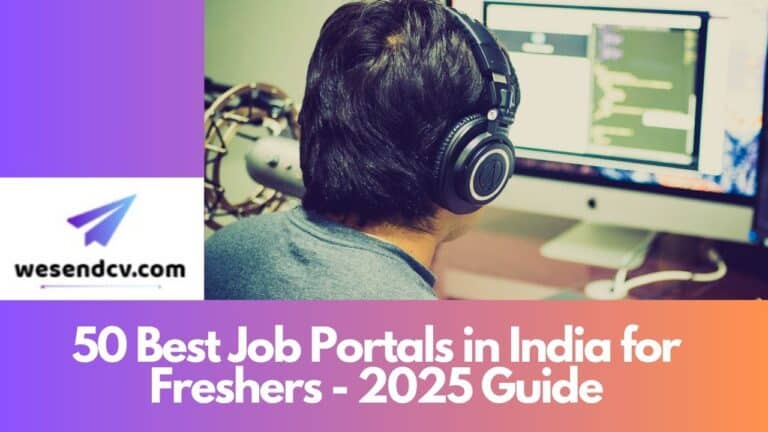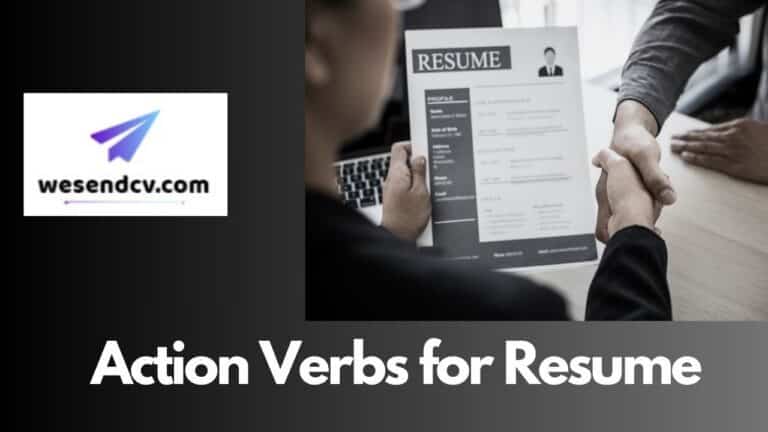Main Highlights of Content
ToggleIntroduction
Importance of a Well-Crafted Resume
A well-crafted resume serves as your first impression in the competitive job market. It’s often the single document that determines whether you land that crucial interview. I remember when I first entered the job market; I spent countless hours refining my resume. The effort paid off: a polished, tailored resume helped me stand out among dozens of applicants. Here’s why dedicating your time to create an impressive resume is essential:
- Showcases Your Professional Journey: Your resume tells the story of your career—highlighting your skills, experiences, and achievements that align with potential employers’ needs.
- Sets You Apart from the Competition: A generic resume won’t capture the attention of hiring managers. A carefully tailored one that speaks directly to the job can make all the difference.
- Demonstrates Your Communication Skills: A clear, concise, and well-organized resume showcases your ability to communicate effectively, a skill highly valued in any profession.
In my experience, the initial effort I poured into my resume translated into tangible opportunities. It’s essential to regard it as your marketing tool—showing why you are the right fit for the role.
Common Mistakes to Avoid
Navigating the process of creating a resume can be daunting, especially with so much conflicting advice available. To help streamline that process, I’ve compiled a list of common mistakes that many job seekers make:
- Using a Generic Template: While templates can provide a helpful structure, using one without customization can lead to a lack of authenticity. It’s vital to craft your resume to reflect your unique experiences.
- Including Irrelevant Information: Some candidates feel compelled to include every job they’ve ever held. Focus on relevant experiences and skills that pertain specifically to the job you’re applying for.
- Ignoring Keywords: Many companies use Applicant Tracking Systems (ATS) to filter resumes. Missing keywords from the job description can result in your resume being overlooked.
- Neglecting Proofreading: Spelling or grammatical errors can create an impression of carelessness. Always double-check your work or even ask someone else to review it.
By avoiding these pitfalls, you can present a polished, professional image to potential employers. Investing time in creating a great resume not only boosts your confidence but increases your chances of landing that dream job.
Formatting Your Resume
Choosing the Right Font and Size
Once you’ve structured your content and gathered all the necessary information, the next step is ensuring your resume is easy to read and visually appealing. I learned early on that the font you choose makes a huge difference. Here are some tips based on my experience:
- Stick to Professional Fonts: Fonts like Arial, Calibri, and Times New Roman are classic choices that convey professionalism. I remember submitting a resume in a fancy script font one time—not my best choice.
- Font Size Matters: Generally, a font size between 10 and 12 points works best for the body text. Major headings can be around 14 to 16 points, helping them stand out without overwhelming the document.
- Be Consistent: Use the same font throughout your resume. This consistency creates a cohesive look that reflects a high level of professionalism.
Remember, clarity is key. The goal is to make it easy for employers to scan your resume. If they struggle to read it, they might not take the time to see your qualifications.
Organizing Sections Effectively
Next, let’s talk about organizing the content on your resume. A well-structured resume not only helps convey your qualifications clearly but also guides the reader’s eye to the most important information first.
- Start with Contact Information: As we discussed in the previous section, your name and contact details should be at the top.
- Professional Summary Next: A brief professional summary can capture their attention immediately. I often tailor this section for each job application to ensure it highlights relevant strengths.
- List Work Experience: Organize this chronologically, starting with your most recent position. Ensure job titles are bolded to allow quick reference. I’ve benefited from bullet-point formatting here; it makes responsibilities and achievements easier to digest.
- Education and Skills Sections: After work experience, list your education. This section can be less extensive, especially if you have a significant work history. Follow this with a skills section that focuses on your key competencies. This is where transferable skills shine through, even if they come from unrelated job experiences.
By strategically organizing these sections, you make it easier for hiring managers to identify what they’re looking for. I often find it helpful to draw a simple outline before formatting; it gives me a clear roadmap of how my resume should flow. Your resume should feel like a seamless narrative of your career—cohesive, logical, and easy to follow.
Contact Information
Including Essential Details
As you move through the process of formatting your resume, one of the most critical sections is your contact information. This might seem straightforward, but it plays a vital role in ensuring potential employers can easily reach you. Reflecting on my own experiences, I once overlooked the importance of this section when I hastily submitted my resume. After an exhilarating interview, I nervously realized I had listed an outdated phone number! Here are the essential details to include:
- Full Name: Clearly state your name at the top, preferably in a larger font to make it stand out.
- Phone Number: Provide a direct number where you can be reached easily. Avoid including your work phone number, as this could lead to complications.
- Email Address: Use a professional email address—ideally one that includes your name. Avoid nicknames or unprofessional monikers. I once had an email that contained a childhood nickname, and I quickly learned that it wasn’t suitable for job applications.
- LinkedIn Profile: Including your LinkedIn URL can offer employers a deeper insight into your professional background. Make sure it’s up to date!
- Location: While it’s not necessary to provide your full address, mentioning your city and state can help employers identify your general location.
Providing these essential details ensures you present yourself as approachable and professional from the very start of your resume.
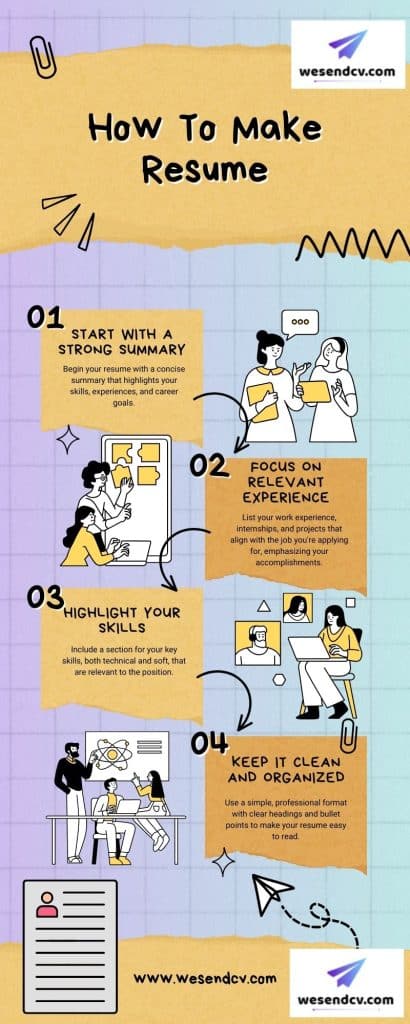
Formatting Your Contact Details
Now that we’ve covered what to include, let’s discuss how to format your contact details effectively. A clean and organized presentation here sets the tone for the rest of your resume.
- Alignment: I prefer to align my contact information to the left for a classic look. However, centring it can be modern and sleek—choose what feels right for your style.
- Spacing: Use adequate spacing between each detail. A cluttered contact section can be overwhelming. I often use bullet points or a simple line break to maintain clarity.
- Bold and Italics: Don’t be afraid to use bold text for your name or job title; this helps direct attention where it’s needed. Ensure that your contact details are in a standard font size—this makes it easy to read without overshadowing the other sections.
Here’s a quick example layout:
John Doe
(123) 456-7890
[email protected]
www.linkedin.com/in/johndoe
San Francisco, CA
Formatting your contact information in a clean, logical way makes it easy for hiring managers to reach you swiftly. Always double-check for accuracy—after all, your CV is your first stepping stone towards that dream job!
Professional Summary
Crafting a Compelling Summary
After your contact information, the next critical section of your resume is the professional summary. This brief overview serves as your elevator pitch—providing potential employers a glimpse into who you are as a professional. Reflecting on my own experiences, I’ve learned that a well-crafted summary can make a lasting impression. A compelling professional summary should be concise yet impactful. Here are some tips based on what I’ve found effective:
- Start Strong: Open with a powerful statement about your professional identity. For instance, instead of saying, “I have experience in marketing,” try, “Creative marketing professional with over five years of experience driving successful campaigns.”
- Highlight Key Achievements: Use two or three sentences to summarize your standout accomplishments. This can include awards, recognitions, or specific goals you’ve achieved in past roles.
- Focus on Your Skills: Identify the core skills that make you an asset. Consider both hard and soft skills; this shows your versatility. In my summary, I highlighted not just technical skills but also my ability to collaborate and lead teams.
Ultimately, your goal is to pique the employer’s interest and make them want to learn more about you.
Tailoring Your Summary to the Job
As you dive into crafting your professional summary, don’t forget the importance of tailoring it to each specific job application. I once made the mistake of using a generic summary that didn’t speak to the specific needs of the job. Here’s how to personalize it effectively:
- Review the Job Description Carefully: Identify keywords and phrases in the job posting. For example, if the job emphasizes “leadership development,” incorporate that phrase into your summary if it aligns with your experience.
- Align Your Summary with Company Values: Research the company culture and values. If teamwork is a core principle, emphasize your collaborative skills or experiences.
- Be Specific: Rather than making broad statements, provide quantifiable accomplishments that align with the job expectations. If applying for a sales position, mention something like, “Boosted sales by 20% in a single quarter by implementing innovative marketing strategies.”
To illustrate, here’s how you might tailor a summary based on a hypothetical job description: Generic Summary: “Detail-oriented professional with experience in project management and team collaboration.” Tailored Summary: “Results-driven project manager with a proven track record of successfully overseeing complex projects and enhancing team collaboration strategies to improve productivity by 30%.” By tailoring your professional summary, you demonstrate to potential employers that you’re not just a fit for any job; you’re the ideal candidate for theirs. Taking the time to refine this section can significantly increase your chances of catching a recruiter’s eye.
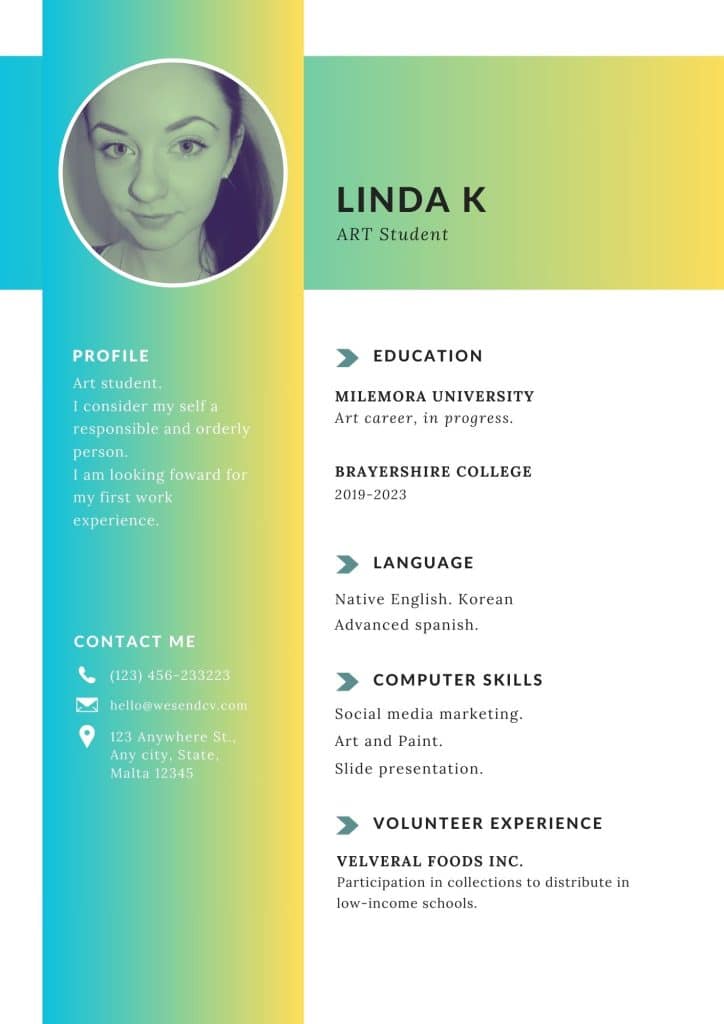
Work Experience
Listing Job Responsibilities
Moving on from your professional summary, the work experience section of your resume is where you can showcase your roles and responsibilities. This section is crucial because it provides concrete evidence of your professional journey and skill set. When I first crafted my resume, I faced the challenge of summarizing my responsibilities concisely yet effectively. Here are some strategies I found helpful:
- Be Specific: Clearly outline what your roles entailed. Instead of vague phrases like “assisted with marketing,” consider being more precise: “Collaborated on a team of five to develop and launch a social media campaign that increased brand awareness by 15%.”
- Use Action Verbs: Starting each bullet point with a powerful action verb can significantly enhance your descriptions. Words like “Implemented,” “Managed,” and “Developed” make for compelling reads. For example, “Managed a team of 10 to ensure project deadlines were met and exceeded customer expectations.”
- Keep it Relevant: Focus on responsibilities that tie back to the job you’re applying for. I always make it a point to review the job description and align my experiences with the skills and responsibilities listed there.
Remember, hiring managers should be able to envision your past roles and how they relate to their needs.
Highlighting Achievements
Now that we’ve established how to list responsibilities effectively, let’s talk about the importance of highlighting your achievements within each role. This is your moment to shine! In my resume, I learned that simply listing responsibilities wasn’t enough to grab attention; it’s the achievements that truly showcase your impact.
- Quantify Results: Whenever possible, include numbers to emphasize your contributions. For instance, “Increased sales by 30% year-over-year” is much more impactful than just stating “Responsible for sales growth.” This quantification provides tangible proof of your effectiveness.
- Focus on Outcomes: Mention how your contributions benefited the organization as a whole. For example, “Redesigned inventory management system, leading to a 25% reduction in costs and a significant improvement in order delivery times.” This demonstrates not just what you did, but how it positively affected the company.
- Don’t Overlook Soft Achievements: Achievements aren’t just about numbers; they can also be related to skills and improvements. For instance, “Mentored junior staff, leading to improved team performance and staff retention” can illustrate leadership qualities that employers highly value.
Here’s an example of how to combine responsibilities and achievements in a single bullet point: Before: “Handled customer inquiries.” After: “Handled over 50 customer inquiries daily, achieving a 95% satisfaction rate through effective conflict resolution and service enhancements.” By emphasizing not just what you did but the value you brought to your previous roles, you create a much more compelling narrative. This approach can easily distinguish your resume from others, reflecting your potential value as an employee to prospective employers.
Education Section
Including Relevant Degrees and Certifications
Following your work experience, the education section of your resume is essential—it provides potential employers with insight into your educational background and qualifications. I remember when I first transitioned from university to the professional world; I learned that including my most relevant degrees and any additional certifications made a notable difference. Here are some tips to consider when listing your education:
- List Your Degrees: Start with your highest level of education. If you’ve earned a degree, indicate your major and the institution’s name. For example, “Bachelor of Science in Marketing, XYZ University, 2020.”
- Include Relevant Certifications: Additional certifications can set you apart, especially in fields like tech and healthcare. If you’ve obtained certifications relevant to the position, make sure to list them. For example, “Certified Digital Marketing Professional (CDMP)” or “Project Management Professional (PMP).”
- Don’t Forget the Details: Mention any honours or distinctions you received. If you graduated with honours or were part of relevant coursework that showcases skills pertinent to the job, these details can add credibility to your qualifications.
Remember, the education section should convincingly convey your academic preparation for the role you’re vying for.
Formatting Your Education Details
Now that we’ve discussed what to include in your education section, let’s take a closer look at how to format these details for clarity and professionalism. Like the rest of your resume, this section should be visually appealing and easy to navigate.
- Standard Order: Generally, you should list your education in reverse chronological order, starting with your most recent degree or certification. This makes it easier for employers to see your latest achievements first.
- Bullet Points: Using bullet points for your education details can improve readability. Here’s a simple structure you might follow:
Bachelor of Arts in Psychology
University of ABC, City, State
Graduated: May 2021
- Dean’s List: Spring 2020
- Relevant Coursework: Behavioral Analysis, Research Methods
- Consistent Formatting: Ensure your formatting is consistent across all sections of your resume. Use the same font size and style as your work experience section to maintain a cohesive look.
- Keep it Concise: Avoid overloading this section with unnecessary details. Just include what’s pertinent. Employers generally value quality over quantity.
In my experience, having a well-organized education section not only highlights my qualifications but also reflects my commitment to attention to detail. The clearer and more concise this section is, the easier it will be for hiring managers to see how your education aligns with their needs. This can play a pivotal role in getting your resume into the “interview” pile rather than getting lost in the shuffle.
Skills Section
Identifying Your Key Skills
After detailing your educational background, the skills section of your resume is your opportunity to shine a spotlight on the specific abilities that make you a strong candidate. When I first began listing my skills, I realized it was essential to focus on those that were not only my strengths but also aligned with the job I was applying for. So how do you identify your key skills? Here are some practical steps to guide you:
- Review Job Descriptions: Take time to analyze the job postings that interest you. Look for recurring themes or required skills. If “project management” or “data analysis” appears consistently, that’s a hint to highlight these skills in your resume.
- Self-Assessment: Think about previous roles and responsibilities. What tasks did you excel at? For example, did you consistently receive praise for your presentation skills or your ability to solve complex problems? Jot these down.
- Seek Feedback: Sometimes, our perceptions of our skills may differ from how others see them. Asking colleagues or mentors for their perspective can reveal additional strengths you may have overlooked. I remember a colleague once pointed out my knack for “team leadership” during a project. That feedback made its way into my resume!
Typically, it’s beneficial to categorize your skills into hard and soft skills to present a well-rounded picture.
Showcasing Transferable Skills
Another crucial element to consider in the skills section is the importance of transferable skills. These are abilities that can be applied across various roles and industries. Early in my career, I learned that showcasing these skills helps broaden your appeal, especially if you’re transitioning to a new field. Here’s how to effectively showcase your transferable skills:
- Identify Key Transferable Skills: These might include communication, leadership, critical thinking, and problem-solving. For instance, if you’ve worked in retail and are applying for a marketing role, your customer service experience could translate into strong communication skills.
- Provide Context: When listing transferable skills, briefly describe how you used them in past experiences. For example:
- Communication: “Delivered presentations to diverse audiences, resulting in increased engagement and understanding of complex projects.”
- Leadership: “Led a cross-functional team in launching a new product, reinforcing my ability to motivate and guide team members.”
- Tailor to the Job: Just like your summary, your skills need to reflect what the employer is looking for. Customizing for each application may take a little time, but it’s worth the effort.
By thoughtfully identifying and showcasing both your key and transferable skills, you create a compelling case for why you’re an ideal fit for a given role. This section is instrumental in demonstrating your qualifications and can ultimately set you apart from other candidates vying for the same position.
Additional Sections
Adding Volunteer Experience or Projects
Having covered the fundamental sections of your resume, let’s explore the value of adding additional sections like volunteer experience or projects. These components can significantly enhance your resume by showcasing your commitment, initiative, and diverse skills. I learned this firsthand when a hiring manager pointed out that my volunteer work at a local non-profit truly set me apart from other candidates. Here’s how you can effectively include these experiences:
- Format Consistently: Just like your work experience, format your volunteer experiences in reverse chronological order. This helps maintain cohesion throughout your resume. For example:
Volunteer Coordinator
Local Community Center, City, State
June 2020 – Present
- Organized community events that attracted over 200 attendees, fostering a stronger neighborhood connection.
- Managed a team of 15 volunteers, ensuring effective communication and scheduling.
- Highlight Relevant Skills: Emphasize the skills you applied or developed during these experiences. Perhaps your volunteering involved project management or relationship building with stakeholders, both of which are valuable in many roles.
- Include Significant Projects: Don’t hesitate to showcase specific projects—be it academic, professional, or personal—that are relevant to the job you’re applying for. I once led a significant project in college, creating a marketing campaign for a local business, which landed me an interview solely due to its relevance!
Including volunteer experience and projects allows you to present a fuller picture of yourself to employers, revealing qualities that might not emerge through traditional work history alone.
Including Professional Memberships or Associations
Another excellent addition to your resume is your involvement in professional memberships or associations. These affiliations can demonstrate your commitment to your field and show hiring managers that you actively seek to advance your knowledge and network within your industry. Here’s how to go about it:
- List Relevant Memberships: Include any professional organizations you belong to, particularly those related to the job. For instance, if you’re in marketing, memberships in organizations like the American Marketing Association (AMA) can enhance your credibility. Here’s a simple format you might follow:
Member
American Marketing Association (AMA)
January 2022 – Present
- Participate Actively: If you’ve taken on any roles within these organizations—like serving on a committee or participating in events—make sure to highlight this. It shows initiative and a willingness to engage. For example:
Committee Member
Local Chamber of Commerce
- Collaborated with business leaders to organize networking events, improving community engagement.
- Emphasize Relevance: When including memberships, explain how they enrich your professional profile. For example, participating in regular workshops through your organization not only highlights your commitment to learning but can also introduce you to the latest industry trends.
Incorporating these additional sections into your resume can provide valuable context about your interests, commitment, and drive—it can transform a standard resume into one that tells a compelling story about who you are as a professional. Setting yourself apart in this way may just be the key to landing that coveted job interview.
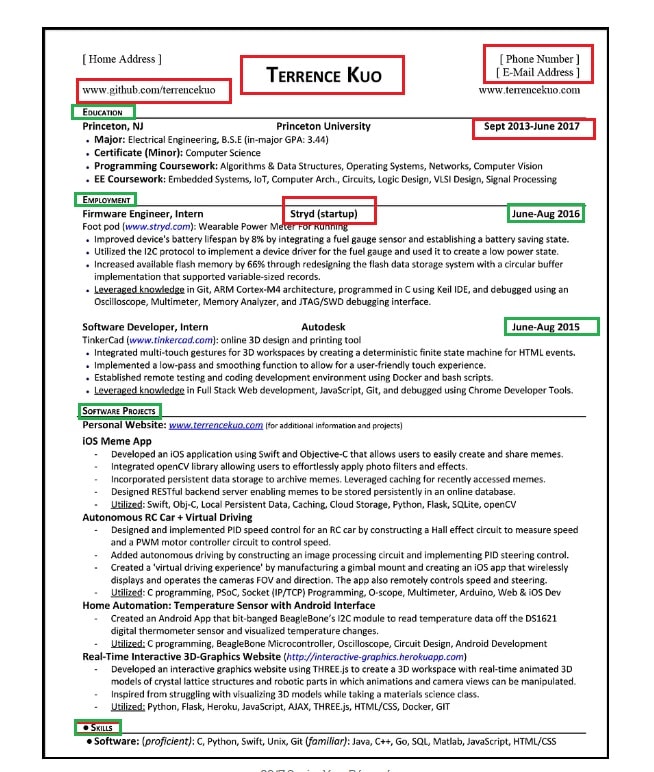
Tailoring Your Resume
Customizing Your Resume for Each Job Application
As you move forward in crafting your resume, one of the most important steps is tailoring it for each job application. This might sound tedious, but I can assure you that taking the time to customize your resume significantly boosts your chances of landing an interview. When I first started applying for jobs, I used a one-size-fits-all resume that ultimately didn’t showcase my strengths effectively. After some feedback, I learned the power of specificity. Here are some strategies to customize your resume:
- Analyze the Job Description: Break down the job listing and highlight key skills and qualifications that the employer seeks. For instance, if the listing emphasizes “project management skills,” make sure to adjust your work experience section to reflect your relevant roles and accomplishments in that area.
- Adjust Your Professional Summary: Revise the summary section to speak directly to the position. For example, instead of saying, “Results-oriented marketing professional,” try “Results-oriented marketing professional with expertise in digital campaign strategies, as highlighted in your job posting.”
- Focus on Relevant Experience: If you have diverse experience, only include jobs that are pertinent to the position you’re applying for. I found that emphasizing my experience in roles directly related to the new position made a noticeable difference in interview requests.
By customizing your resume for each application, you can create a powerful narrative that highlights why you are the best fit for that specific role.
Using Keywords to Increase Visibility
In addition to customization, integrating relevant keywords into your resume is essential for making your application stand out, especially when companies use Applicant Tracking Systems (ATS) to filter candidates. Here’s how to effectively use keywords:
- Identify Keywords: Again, the job description is your friend. Highlight keywords and phrases related to skills, qualifications, and industry-related terms. For instance, if the listing mentions “data analysis” or “stakeholder engagement,” these phrases should appear in your resume where relevant.
- Incorporate Naturally: While it’s essential to include these keywords, make sure they are seamlessly integrated into your work experience and skills sections. Avoid awkward phrasings—your resume should still be a comfortable read. For example, if the job requires “team collaboration,” say something like, “Facilitated team collaboration to complete project milestones ahead of schedule.”
- Balance is Key: Don’t overstuff your resume with keywords; your experience and qualifications must remain genuine and relatable. Maintain a natural flow while hitting those important keywords.
In my experience, I saw a significant improvement in my application responses once I started refining my resumes this way. By tailoring your resume and including the right keywords, you not only enhance your visibility but also demonstrate to potential employers that you take their needs seriously. Ultimately, this tailored approach helps portray you as a proactive candidate who is ready to contribute meaningfully to their team—a message that resonates well in any hiring process.
Finalizing Your Resume
Proofreading for Errors
After pouring so much effort into crafting and tailoring your resume, the final step—proofreading—can seem like an afterthought. However, I cannot stress enough how critical this step is! I remember submitting a resume with a noticeable typo in my previous position, and it left a less-than-stellar impression on the hiring manager. Here are some essential tips to ensure your resume is error-free:
- Take a Break: After writing, step away for a little while. Coming back with fresh eyes can help you catch mistakes you might have missed initially. I usually set my resume aside for a few hours, or even overnight if time allows.
- Read Out Loud: This technique helps you hear the flow of your sentences and catch awkward phrasings or misplaced adjectives. I’ve often found that reading aloud reveals errors that the eye might gloss over.
- Check for Consistency: Ensure consistent formatting throughout your resume. This includes font size, bullet point style, and spacing. Looking for consistency can help you spot errors, as I realized when I had different bullet point styles in the same section.
- Use Tools: Leverage proofreading tools or grammar-check software to catch mistakes. I’ve found tools like Grammarly and Hemingway incredibly useful in picking up on issues I may have missed.
As simple as it may seem, taking the time to proofread can make the difference between landing an interview or being discarded.
Seeking Feedback from Professionals
Once you’ve polished your resume, seeking feedback from professionals can elevate it even further. I once thought I could solely rely on my own judgment, but after getting valuable insights from a mentor, I realized how crucial external opinions are. Consider these strategies when seeking feedback:
- Use Your Network: Reach out to colleagues or mentors who have experience in your industry. A fresh perspective can highlight flaws or opportunities for improvement that you might have missed. For example, I reached out to an old professor whose advice on phrasing made my resume much stronger.
- Join Resume Workshops: Many organizations and universities offer resume workshops. Participating in these sessions not only allows you to receive input from professionals but also provides insights into what recruiters are currently looking for in resumes.
- Be Open to Critique: It can be tough to hear criticism about something you’ve worked hard on. However, being open to constructive feedback can lead to meaningful improvements. I remind myself that the goal is to create the best representation of my skills and experience.
By taking the time to proofread and seeking external feedback, you’ll significantly improve the overall quality of your resume. These steps ensure that what you ultimately submit isn’t just polished but also resonates with hiring managers. This multi-layered approach to finalizing your resume can lead to greater confidence during the application process—and, hopefully, more interview invitations! So, take these steps seriously; you’ve put in so much work—let it shine.
Conclusion
Creating a compelling resume is about presenting your skills, experience, and qualifications in a clear, concise, and visually appealing format. Focus on relevant information, use a clean resume format, and tailor each resume to the job you’re applying for. With the right approach, your resume will help you stand out and secure interviews.
About the Author
Linda Kaurji is a career development expert with extensive experience in resume writing and job search strategies. Passionate about helping job seekers achieve their career goals, Linda offers practical advice and tips to craft professional resumes that make a lasting impression.
